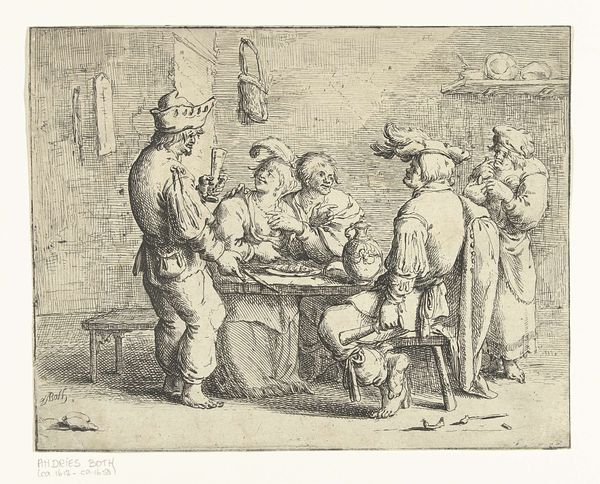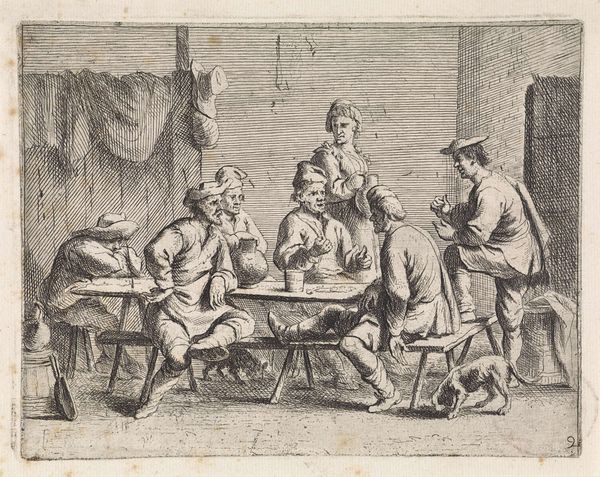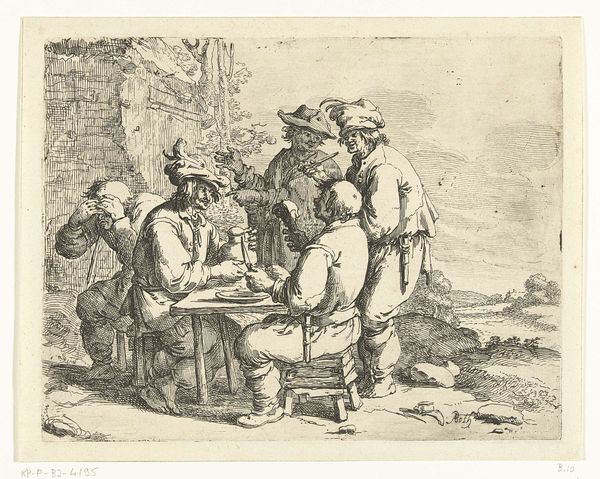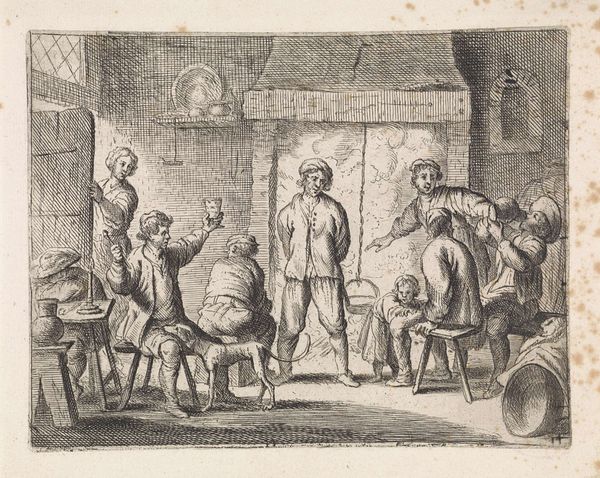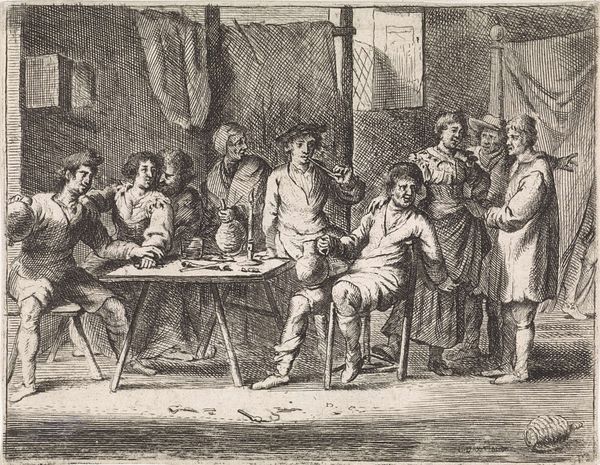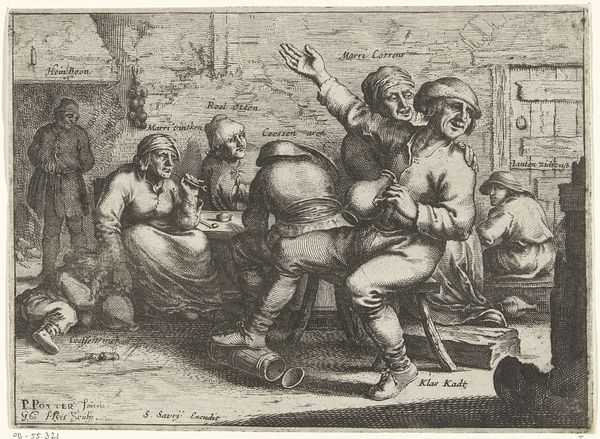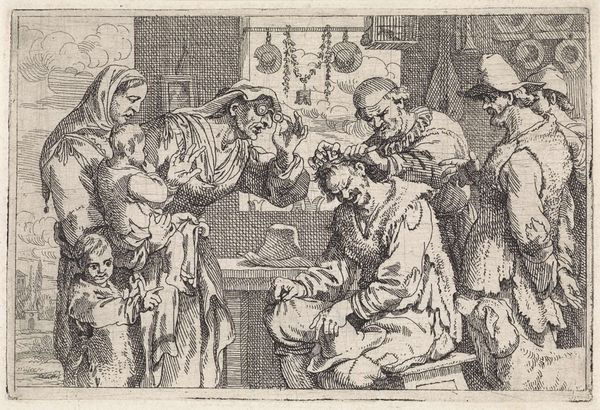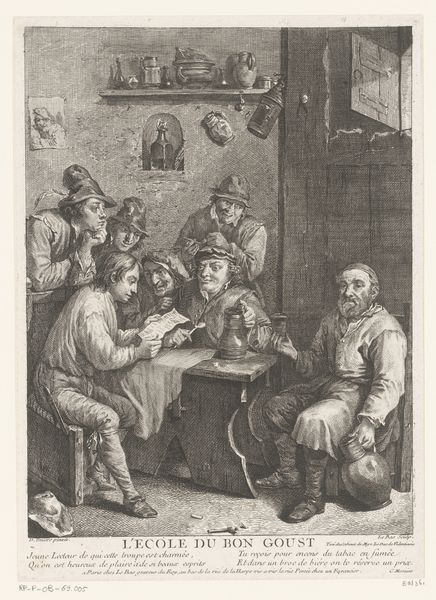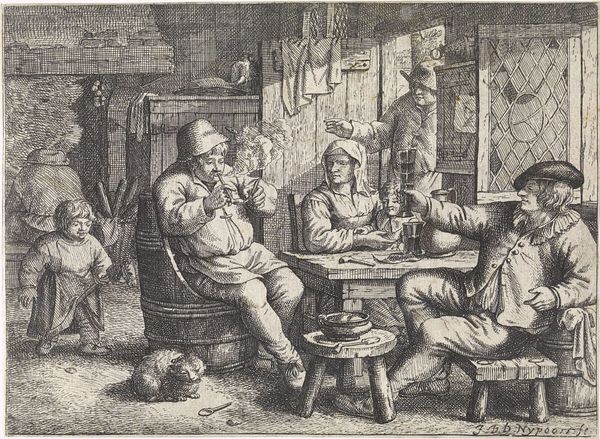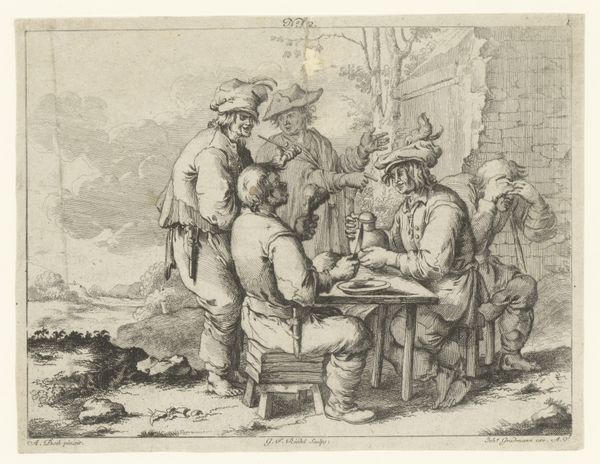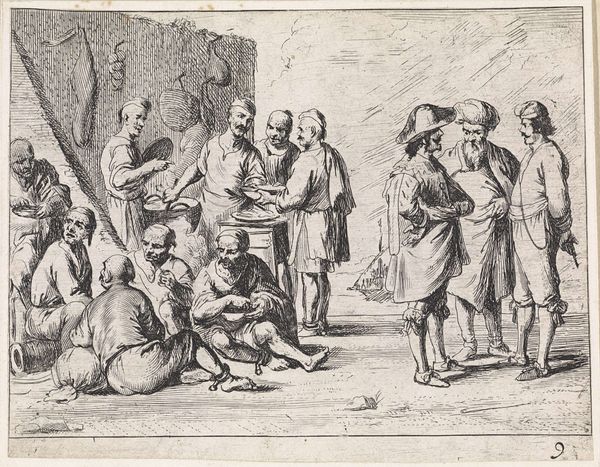
print, engraving
#
narrative-art
#
baroque
#
dutch-golden-age
# print
#
pen sketch
#
figuration
#
line
#
genre-painting
#
engraving
Dimensions: height 111 mm, width 149 mm
Copyright: Rijks Museum: Open Domain
Curator: Cornelis de Wael's engraving, "Vrouw verlaat herberg", or "Woman Leaving an Inn," produced sometime between 1630 and 1654, plunges us into a bustling, if slightly disheveled, tavern scene. What strikes you immediately about it? Editor: Immediately, it's the feeling of interruption. A central cluster of men are deeply involved in something, perhaps a game, oblivious to this woman’s departure. The scratchy, nervous energy of the engraving only heightens that sense of fractured narrative, wouldn’t you agree? Curator: Absolutely, that interruption has psychological roots, for certain. Taverns, then and now, often symbolized a temporary escape from societal constraints and a suspension of traditional morals. De Wael may have intended to show not merely an event, but to illustrate how everyday interactions create cultural friction and emotional shifts. Notice the gaze of the figure at left; he's not participating and is even looking upwards, almost as if searching for moral clarity. Editor: I see that. Her departure reads almost like a silent rebellion against the boisterous male-dominated space. Consider the inn as a microcosm reflecting broader patriarchal structures of the time. Is her leaving a statement about the roles prescribed to women or their exclusion from these public spheres? Curator: A provocative thought, certainly. Symbols were commonly used in these depictions to express broader cultural assumptions about behavior. For instance, while speculative, that overturned stool hints at disharmony or interrupted routine. Even that jug she carries evokes a maternal image, perhaps suggesting she returns to a domestic role set apart from these idle tavern games. Editor: The image, though a genre scene, is layered with gendered connotations of public versus private life. Look how her dark clothing separates her visually, doesn't it? I find myself questioning who gets to occupy these spaces without societal judgment. Curator: Indeed, an art piece such as this echoes cultural anxieties. This becomes all the more poignant as a surviving document offering perspectives of these gendered norms of Dutch society in the Baroque. Thank you, this has reshaped my perception! Editor: The artwork provides so many openings to see the tensions in what we casually perceive from the past; these everyday scenarios had profound implications in those times.
Comments
No comments
Be the first to comment and join the conversation on the ultimate creative platform.
